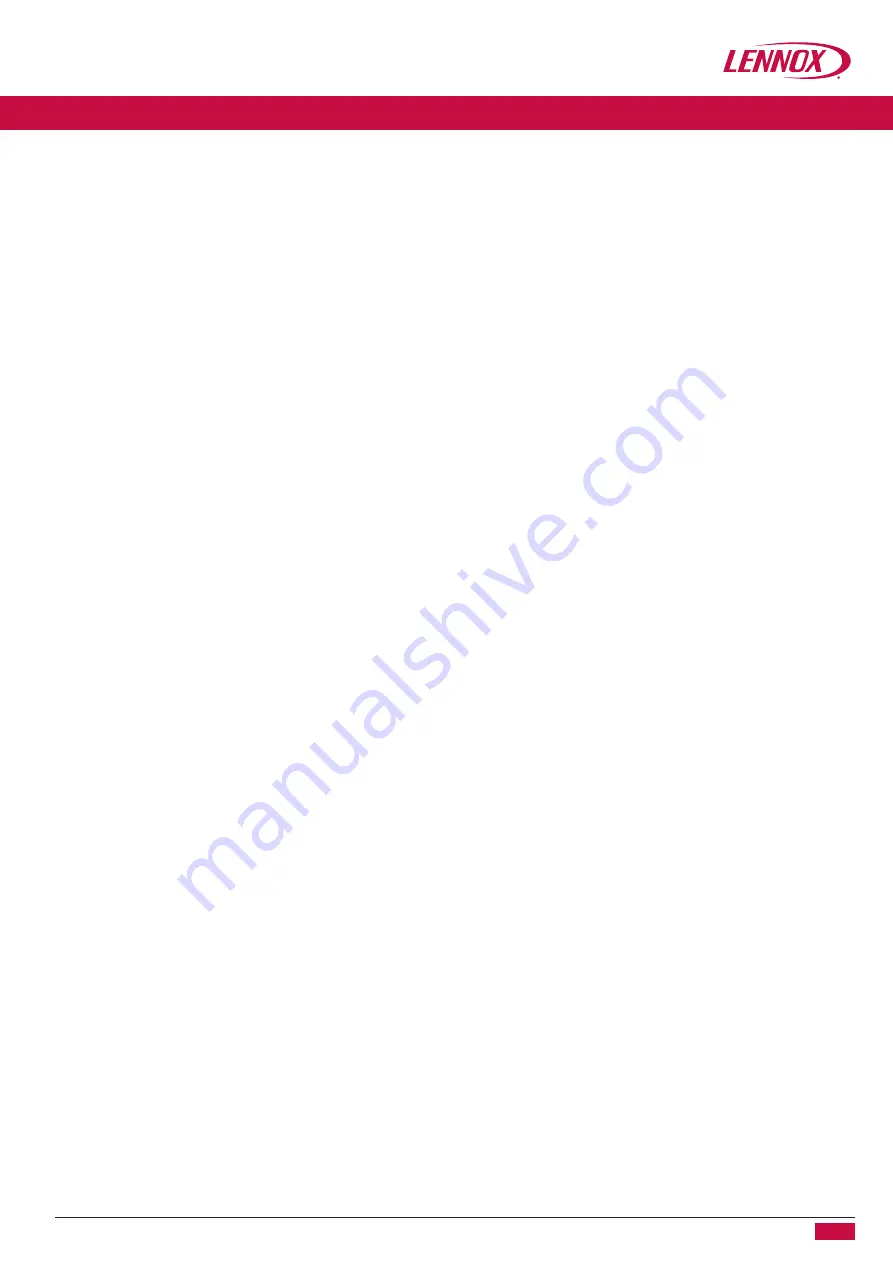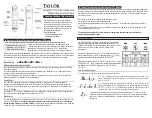
www.lennoxemea.com
PCUS Thermostat - User Manual - 0821EN
11
3. LOGICAL DESCRIPTION OF THE PCUS REMOTE CONTROL
3.1 VENTILATION REGULATION
The PCUS control card is suitable for regulating units with standard three-speed fans or as an alternative to regulating
the ventilation of units with EC fans.
The configuration of the type of fans is fixed at the manufacturer parameter level. In the case of standard three-
speed fans, three 230V digital outputs are used, while in the case of EC fans, two 0-10V analog outputs are used.
For standard fans, the ventilation is adjusted by pressing the ventilation button which allows the passage from one
speed to the next.
For EC fans, regulation is always carried out by pressing the ventilation button, which however correspond to different
voltages that correspond to the minimum, average and maximum voltage that can be set in the manufacturer
parameters.
These values are by default 1V and 10V, i.e. the minimum speed corresponds to 1V, the average to 5.5V and the
maximum to 10V.
The minimum and maximum values of the supply fan correspond to parameters L0.9 and L0.A of the manufacturer
parameters, while the minimum and maximum values of the return fan correspond to parameters L0.B and L0.C
of the manufacturer parameters.If it is necessary to have different voltage values with the same speed selected,
it is possible to modify the minimum and maximum values of one of the two fans and the speed values will adapt
according to these limits according to the following rule: low speed = V minimum medium speed = (V m
V maximum) / 2 high speed = V maximum
For EC fans it is also possible to adjust the operation in accordance with an external analogue CO2, RH, VOC probe
equipped with a 0-10V output. Depending on the type of sensor used, it is possible to set the reference set value
and a regulation band within which the ventilation moves within the minimum and maximum values set.
3.2 TEMPERATURE REGULATION
Temperature regulation. if there are active devices, such as water valve or electric heater, it is activated by setting
the desired set point with the + or - keys.
The control probe is by default the room temperature probe, however it is possible to select the inlet air probe by
modifying the manufacturer parameter L0.6 from 0 to 1.
The adjustment can be: only hot, only cold, hot and cold.
In the case of heating only adjustment, the 10C icon will be lit and the actual activation of the water valve or the
electric heating element will be highlighted by the lighting of icons 4C or 4D.
In the case of cooling only regulation, the 10B icon will be lit and the actual activation of the cooling water valve
will be highlighted by the 4C icon lighting up.
In the case of hot and cold adjustment, the 10 ° icon will light up and the adjustment described in the paragraphs
above will be active at the same time for only hot and cold only adjustment.
In the case of regulation with mixed valve, it is not possible to regulate hot and cold at the same time, but only hot
and cold only settings are manually selectable.
The temperature regulation applies by default an energy saving logic that takes into account the external temperature
and therefore, if this allows it, the water valve or the electric heater is not activated if the external air temperature
conditions do not require it.
It is possible to exclude the influence of the external air temperature from the hot regulation logic by modifying
the manufacturer parameter L0.3 by setting it to 1.
It is possible to exclude the influence of the external air temperature from the cold regulation logic by modifying
the manufacturer parameter L0.4 by setting it to 1.
In the case of temperature regulation with modulating water valve (V3M) it is possible to define the temperature
regulation band with respect to the set with user parameter U0.6.
For example, with U0.6 = 2 °C, the maximum opening of the water valve will occur when the difference between the
desired set point and the detected temperature is equal to or greater than this value, while it acts in a proportional
way to this difference when it is included. within 2 °C.
3.3 OPERATION OF HEAT RECOVERY DEFROST
The recovery defrost action is possible if the unit is equipped with the expulsion temperature probe.
If the expulsion temperature drops below parameter U0.4, the defrosting action is activated and ends when the
expulsion temperature rises above U0.4 + U0.5.
The defrost action can take place in three ways that can be set in parameter U0.9.
U0.9 = 1 speed reduction of the EC fans
U0.9 = 2 closing of the inlet / outlet air dampers and opening of recirculation damper (only with unit equipped
with these dampers)
U0.9 = 4 activation of the electrical preheating resistance.

































